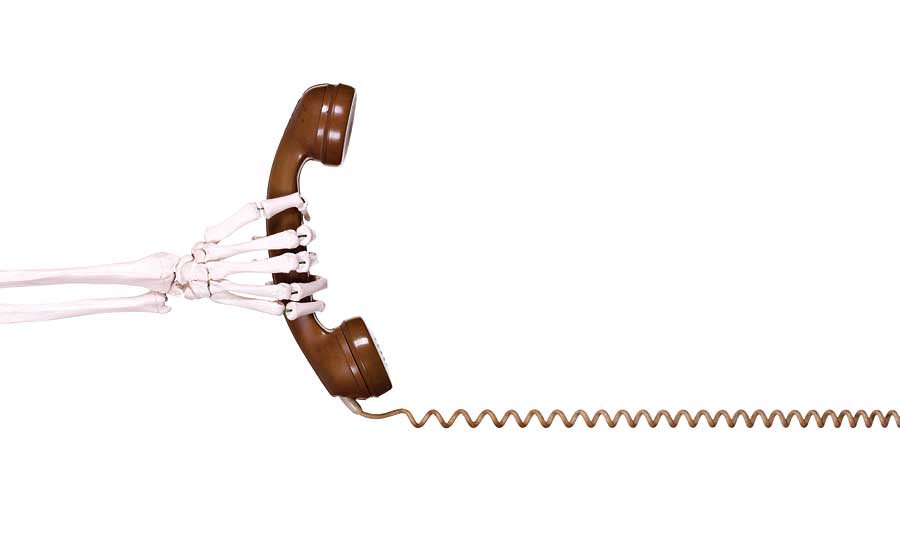How to create a proactive marketing plan
Answering the call.

Most contractors are great at the work they do, but they’re lacking when it comes to making the phone ring at all, much less in a way where they will end up with the right amount of calls — from the right customers — at the right time.
The key is to cultivate skills and techniques you can use to make your phone ring with more calls than you can handle. That’s because having more opportunities than you need is what will finally enable you to be picky about what work you pursue and for how much money. You’re not likely to charge what you deserve to be paid and need to operate a highly profitable business if your phone doesn’t ring off the hook.
I’ve worked with a lot of contractors, and many have put ample money into marketing. Some are real students of the right marketing vehicles they need to employ to reach their market. But, many of these same contractors experience severe drop-offs in call count throughout the year as they yo-yo in and out of their busy and slow seasons. Here’s what’s worse: It happens to them year after year.
What are they missing? They’re not proactive enough.
One trait the best contractors I’ve worked for have in common is they don’t wait until they slow down to work on making the phone ring.
It’s human nature to put off thinking about what’s going to happen months later, especially when we’re still busy. The problem with this is that if you wait till the slow season to market, it’s too late. And if you pull back on your marketing because you’re already busy, it’s going to come at a cost later.
When it comes to marketing, the absolute key to success is to be proactive. You want to have a proactive marketing calendar filled with activities you are going to do to push out the message way before you actually need the phone to ring.
What’s the best way to create a proactive marketing calendar? Start by taking full advantage of software like Outlook, Google Calendar, or any other shareable calendar. Begin by populating the calendar with recurring events from day one through when you expect to meet your marketing goals.
Let’s say it is Nov. 1 and you sit down and determine that you want to go to market with laser-focused, testimonial-based, direct-mail oversized postcards. You’ll want to make sure prospective customers will receive or “be touched by” this postcard and its message three times in a six-week timeframe before January. This means you need to obtain a really good testimonial and picture from a happy customer from the service area you plan to mail to. And you also have to figure out when you want each mailing to go out.
Here’s an example of where you’d start if you wanted to make sure the phone is ringing in January and it’s only November:
Nov. 1: Determine your marketing tactic. To be clear here, laser-focused, testimonial-based direct mail means just that — it’s one clear message with one testimonial about this message, and it’s test-marketed to 500-1,000 people near the person who gave you a great testimonial so your piece will have traction.
The next thing you must do is narrow the areas you’re going to mail to and the demographics so you get the most bang for your buck by purchasing a list that will fit. This will allow you to have about 1,000 really good prospects for this first test marketing. You’ll be well served to get a good mailing list with websites like info-usa.com or coleneigborhoods.com.
Nov. 8: Obtain testimonials, photos, and releases.
Nov. 10: Send copy and testimonials, photos, etc. to the designer/printer.
Nov. 25: Get postcards designed and printed by this date.
Dec. 2, 16, and 30: Send out the mailings.
Let’s say you want a third mailing to go out by Dec. 30. That means you need to work backwards from there — third mailing Dec. 30, second mailing Dec. 16, first mailing Dec. 2. Get postcards designed and printed by Nov. 25. Send copy and testimonials, photos, etc. to designer/printer by November 10. Obtain testimonials and releases by Nov. 8. Put all these dates on the calendar. Notice that you started this project on Nov. 1. Do you see what we did there?
When you do marketing this way, you have a much better chance for the phone to ring off the hook and to experience what it’s like to finally be getting the right amount of calls, from the right customers, at the right time. Not as an exception but as a new — and very welcome — rule.
This article was originally titled “Answering the call” in the January 2017 print edition of Plumbing & Mechanical.
Looking for a reprint of this article?
From high-res PDFs to custom plaques, order your copy today!









